Thomas Jay Oord said: “The Bible tells us how to find abundant life, not the details of how life became abundant.” I disagree.
Belittling the Creative Power of YHWH
Rome was determined to exclude the Jews from the land of Judah, which by now was desolate of its sons. Even in the Galil the gentiles had become very numerous. The old order, wherein Israel had been a people on its own land, was rapidly vanishing. In a few generations the entire Jewish community in the land of Israel would be destroyed, and the center of the Torah would shift to the far-off Bavel.
The Minim were intensifying their efforts to harass the Jews spiritually and physically, and they were busy inciting Rome against them. In Hullin 87A we read the following report: “A min said to Rabbi: He who formed mountains is not the one who created the wind, for it is written 'Behold He forms mountains and He creates the wind' – Amos 4:13. (According to the Gospel of John it was Logos and not YHWH who created the heaven and the earth). Rabbi replied: Foolish one, go to the end of the verse, which states: 'The L-rd of Hosts is His name'”.
That this was a matter of great gravity is evident from the fact that when the Min promised to reply after three days, Rabbi fasted during the ensuing three days until the report came that the Min had taken his life because he found no reply.
G-d blessed the seventh day, and He declared it to be holy, for it was on this day that he ceased from all the work which G-d created to make. (Bereshis 2:3) In other words, as rabbi Leo Baeck observed, G-d created the world in order to continue the work of creation. Let us see how G-d continues to create the earth. Because G-d id not stop to create after six days of creation. G-'s day of rest suggests His continued activity. The Guardian of Israel won't slumber.
The Biblical Secretaries of G-d assigned meteorites to the vast category called “Hosts of the YHWH.” Indeed, if we take into consideration frequency of the meteorite falls, we can compare this phenomenon to rain or dew; that's why the scientific literature speaks about “meteorite showers.” Meteors occur in the earth's atmosphere every day. These and invisible meteorites are estimated to add more than 1,000 short tons (910 metric tons) daily to the earth's weight. But who counted them? Did anybody count bacteria or viruses? Yeast is always there when we need it.
Approximately, 15 billion tons of continental material reaches the outlets of rivers and streams annually. Most of the detritus is trapped near the outlets and on continental shelves and only a few billion tons actually escapes into the deep sea. Together with the biological material in the sea it contributes about 3 billion tons of sediments in the ocean floor each year. Obviously, the Host of YHWH have to balance the yearly disappearance of the continental material into sea depths. And, in fact, they do.
Careful excavation revealed the remains of twenty-three earlier temples lying beneath the ziggurath of Eridu in successively deeper occupation levels, the earliest being a simple chapel built upon an ancient sand dune and dating back to at least 5000 BC. Eighteen levels were revealed from the so-called Ubaid period, which preceded the appearance of writing.”
The ancient people knew of the precious metal’s celestial origin for in many languages the name for it contains a reference to the sky (Gr. Meteoron, things in the air, lifted up, in air). Coming from gods, as it was believed, they were venerated in temples. One of the best known instances is that of the Ephesians; they were worshippers not of the goddess Diana and the “image which fell down from Jupiter,” as the unfortunate translation of Acts 19:35 runs in the authorized English version, but of Diana and of the “thing that fell from the sky.” Similarly, in Delphi besides Apollo a holy stone was the object of adoration. The “iron shield” which fell in Rome under the reign of Numa Pompilius was put in the perpetual custody of a college of 12 priests. The ‘Black stone’ of the Kaba is no doubt, a stone meteorite with its strange black crust. In the ruins of an ancient Mexican temple an iron meteorite was unearthed, carefully wrapped in mummy cloths. A shower of stones which fell from the sky in 1803 at l’Aigle, not far from Paris, finally convinced the Paris Academy and the rest of the scientific world of the reality of the fall of meteorites. Latin term sidus, star is derived from Gr. Sideros, iron.
DUST is composed of tiny particles of many kinds of solid materials. The particles have diameters of less than 0.0025 millimeters (0.0001 inches); a million typical dust particles would have a total volume equal to about one grain of sand. The particles consist of minerals, organic matter, soot, radioactive materials, and salt from evaporated sea spray. In relatively pure air there are fewer than 500 particles of dust per cubic centimeter, whereas dirty air may contain more than 50,000 particles per cubic centimeter.
Millikin site in the Fraser Canyon, British Columbia, where excavation uncovered stratified geological deposits containing a series of archaeological components dating from the early postglacial period to the 19th century A.D.
Plateau basalts, or lava plains, occur where fissures leaked successive flows of basic lava that have blanketed huge areas in basalt. Basalt up to 7000ft (2100m) thick covers 250,000 sq mi (650,000 sq km) in India’s Deccan Plateau. Other outflows form the US Columbia River Plateau, South America’s Parana Plateau, the Abyssinian Plateau, and Northern Ireland’s Antrim Plateau.
The Ring of Fire
Linear chains of volcanic islands and seamounts in the Pacific.Volcanic basins (calderas)
These may be formed in several ways:
a A lava plug bottles up explosive gases below
b In time, pent-up gas pressure blasts off the top of the volcano
c The explosion leaves a great shallow cavity – a caldera or basal wreck.
The Deccan Plateau formed from lava outflows, covers 250,000 square miles.
Volcanic plug:
a Upwelling lava fills the original volcano’s central pipe
b Erosion attacks the soft outer slopes
c Only the resistant lava plug remains
Let the people praise thee, O God; let all the people praise thee.
The river Rhone in southern France flows through a plain of sands and gravels, but buried far beneath these deposits, lies a deep channel. It can be traced down the Rhone valley, sinking over deeper as it goes, until near the Mediterranean coast it is 3,000 feet below the present sea-level.
A similar buried channel underlies the valley of the Nile. In the Delta, it sinks so far beneath the thick layer of sediments deposited by the river that it seemed untraceable. Recently, oil geologists located it – 8,000 feet beneath the city of Cairo
The great Sphinx of Giza, as a 19th-century photograph shows has spent a large part of its known history covered up to its neck in desert sands. Whilst thus covered, its body has not been subject to wind-erosion, yet the body is heavily weathered. Could there have been some weathering agency at work?
Indeed, the meteorite showers may consist of no more than 5 meteors in an hour but may reach as many as 75. On occasions, the sky may be lit by thousands of meteors per hour. Some 35,000 or so meteors fell one hour during the Leonid meteor shower of November 1833. This spectacular display of the Host of YHWH terrified most everyone who witnessed it. On Feb. 8, 1969, a 30-ton meteor broke up over the town of Pueblito de Allende in northern Mexico. Some of the 5,000 objects larger than a baseball are currently being tracked around the earth – the natural satellites.
Without rain, snow, dew, the earth would not put forth grass, herb yielding seed, and fruit-tree bearing fruit after its kind (Gen 1:11), which means that life would not be possible. We don't perceive the life-fostering function of the meteorite showers because it covers much longer periods of time. The language of the Bible does not sound like the jargon of the modern Science, nonetheless the thoughts of many Biblical verses match exactly conclusions of the present-day geologists.
For instance, the verse: “And G-d said: 'Let the waters under the heaven be gathered together unto one place, and let the dry land appear'” (Gen. 1:9) express the same phenomenon which the modern geologists discovered when they saw that rocks formed below the seas are now high in the mountains and that mountain chains have been raised repeatedly at different places and then worn away.
Climbers in Switzerland, Austria, and Croatia, as they ascend more than a mile above sea level, pass decks of ice-crusted rock made from the skeletons of sea creatures that once lived in the Mediterranean. More than 3,000 years ago, the trodos ophiolite on Cyprus was mined extensively by the Greeks for its copper and tin. In essence, the Greeks were minding the ocean floor that had been conveniently brought up the the surface by G-d.
The deposits were formed by the precipitation of metals from hot-water solutions that were rich in silica and metal and were discharged through the sea floor by hydro-thermal springs. The ophiolites have been identified in various parts of the world: on the Apennines of Norther Italy, the northern margins of the Himalayas in southern Tibet, the Ural Mountains, the eastern Mediterranean, the Afar Desert of northeastern Africa, the Andes of South America, and islands of the western Pacific such as the Philippines, uppermost Newfoundland, and Point Sol along the Big Sur coast of central California.
At the same time, as the Greeks were mining for ophiolites, Celtic miners burrowed through rock and clay of the Salzberg (lit. salt-mountain) and dropped shafts more than 1,000 feet long to extract the salt. An underground mine about 1,000 feet below the surface of Detroit produces more than 1 million tons of salt a year.
There are fossils in Cheops's limestone blocks. One can spend days and nights cataloging the different kinds of sea life in these blocks. The skeletons of microscopic animals accumulated to form beds of the clear, white lime the Egyptians found so attractive for building pyramids. And now, consider the fertile Delta; once, this delta was a bay; patiently the broad Nile filled it up so that peasants could grow enough cotton to export hundred million dollars' worth of it every year.
Most of what is now Louisiana was once part of an ancient bay of the Gulf of Mexico. Louisiana is a “gift” of the Mississippi River. The 350 million cubic yards of sediments carried down by the mighty river each year would cover the entire state of Connecticut, if spread in a layer one inch thick. The many tons of mud, sand, and gravel which the great river dumps into the Gulf of Mexico each day would fill a freight train 150 miles long.
Under the microscope, most of chalk resolves into a coarse powder. Embedded in it, however, are myriads of skeletons of one-celled animals called foraminifera. When the crushed foraminiferal skeletons are subjected to heat and pressure they turn into limestone. A huge chalk and limestone deposit make up much of the southeastern part of England. The Latin name of England Albion (White Island) is derived from the color of these deposits. They are, in turn, part of a much larger deposit, some of which has been worn away or overlain by other types of rock, that stretches from the Baltic through the Low Countries to northern France. At the 22,000-feet level on Mount Everest in the Himalayas there is a 200-feet stratum of foraminiferal limestone. It is used to make roads and in building. Michelangelo's David was once a collection of tiny foraminifera living on the sea bottom.
If it not were for the meteorite showers that the Creator of the Heavens and the Earth sends upon the surface of organic sediments, coal could not have been formed. Coal consists chiefly of carbon, derived directly from organic carbon compounds of vegetation. The carbon in the plants that later formed coal was not obtained from the soil by way of plant roots, but from the air by way of leaves. Being the only known natural agency known capable of abstracting large amounts of carbon from the air, plants employ it in the construction of their tissues and store up for future use. Coal is fossilized plant material, preserved by burial and altered by earth forces. In order that the organic sediments could have been transformed into coal they had to be covered by billions upon billions tons of earth sent as meteorite showers, which made possible compaction and condensation. The distribution and amount of meteorite dust falls are controlled by the air current and winds in the upper atmosphere and then are dispersed by the different systems of air streams, which could be compared to rivers in the ocean. Men did walk and work amid the primeval forests that we dig up as coal.
The radar pictures taken by Columbia belied all those who explained the covering of the Great Sphinx as a result of engulfing it by the shifting sands of Sahara. Now we know that the Sphinx disappeared from the face of the earth similarly as the stone age camp sites – covered by mountains of sand. For the first time the Sphinx was excavated during the reign of the pharaoh Thutmose IV about 1450 B.C. And then, it had been covered again and again. In the 19th century, when it was found by the archaeologists it was again largely engulfed in sand. Indeed, the Creator accurately distributed His host on the face of the earth.
The design of human eye and also of ear and nose points to G-d who continues His creation by enlarging the earth for growing populations of diverse creatures. Tears which are produced by lacrimal glands help to clear eyeballs of foreign particles, such as dust, and keep them from drying out, which would result in blindness. Each time the eyelid blinks, it sucks a little fluid from the glands. After the tears pass across the eyeball, they flow out through two lacrimal ducts that open at inner corner of each eye. They lead to a lacrimal sac and then to the nasal duct. This duct runs the length of the nose and finally opens into it.
The external auditory canal is the opening you see if you look directly into the ear. The outer third of the canal is lined with fine hairs and with the tiny glands that produce wax. The hairs and wax trap dust and other small particles.
Both nasal passages have a lining of soft, moist mucuous membrane covered with microscopic, hairlike projections called cilia. The cilia wave back and forth constantly, moving dust, bacteria, and fluids from the nose to the throat for swallowing.
Consider in this context the design of camel's eye. Camels have long eyelashes, protecting their eyes from sand. The third eyelid is like a windshield wiper on a car, wiping the sand away. It is thin and translucent, allowing camels to see in sandstorms. Broad ridges of bone above each eye act as built-in sun visors, shielding the eyes. Small ears prevent sand from getting in them.
We perceive the same designing “Mind” behind the oil-producing process. Large reservoirs of oil and natural gas are dependent on the existence of certain geological conditions, such as a sedimentary source for the oil, a porous rock to serve as a reservoir, and some kind of confining sediments. The source material is generally organic carbon in fine-grained, carbon-rich sediments. Porous and permeable sedimentary rock such as sandstone provides the reservoir, and diverse geologic structures that result from folding or faulting of sedimentary layers (earthquakes!) can serve as dams to pool the oil. In order for organic material to be transformed into oil, at least one or two conditions must be met. Either the rat of accumulation must be so high or the oxygen in the bottom water must be so low that the material is not oxidized before it is buried. Oxidation causes decay, which destroys organic material; therefore, areas where there are high rates of accumulation of sediments rich in organic material are the most favorable sites for the formation of oil-bearing rock.
Referring to famine as a check on population, Bishop Malthus wrote in the following incredibly sincere passage from the revised sixth Edition of his Essay on the Principle of Population (1862):
“...We should facilitate, instead of impede, the operations of nature in producing this mortality; and if we dread the frequent visitation of the horrid form of famine, we should sedulously encourage the other forms of destruction which we compel nature to use. Instead of recommending cleanliness to the poor, we should encourage contrary habits.” Now you understand better why certain people hate Moses and the Torah.
As the 1972 Club of Rome's Project Report on The Predicament of Mankind made us all aware, there are “limits to growth”, and if the world's major industrial powers continue to pursue economic growth and to foster an ethic based on ever-increasing production and consumption of goods the planet's resources will rapidly be depleted and the environment irremediably polluted. To create “a steady state of economic and ecological equilibrium,” the Report concluded, will require a Copernican revolution of the mind” and if the human species is to survive “man must explore himself – his goals and values – as much as the world he seeks to change. So now, at last you know what the Copernican revolution really means.
In the Biblical cosmology “G-d divided the waters which were under the firmament from the waters which were above the firmament” (Gen. 1:7). Accordingly, we learn from Ex 16:31 that “when the layer of dew was gone up, behold upon the the face of the wilderness a fine, scale-like thing., fine as the hoar-frost on the ground.” This was the “Bread” which YHWH had given them to eat. In the logic of the Bible, the thought that the G-d who created life on the earth have fed his people with “manna which they knew not, neither did their fathers know” (Dt. 8:3), can be regarded as a miracle only in the sense that this food of Heavenly Restaurant had been sent precisely when it was needed for their survival. The idea of the survival of the fittest, or the strongest does not fit into Biblical scheme of things.
Isidore of Seville's Originum sive Etymologiarum contains Herodot's and Diodor's statements that geometry had been invented by the Egyptians to measure land after the disappearance of boundary markers in the Nile floods. Then the Egyptian gymnophysists taught Eudoxos, Pythagoras and Plato all the mysteries of Thoth, a Great Lord of magic which was also called mathematics. Translating the curvatures of the earth into ideal shapes of spheres, triangles and squares they were trying to ascertain the extent of the earth. But how can you find out the extent of the earth knowing that G-d keeps enlarging its size? Reading the list of annual meteor showers which G-d sends to earth, remember the revealing questions contained in the Book of Job: “Where were thou when I founded the earth? Tell if you have understanding.” “Who determined its dimension if thou knowest? Or who stretched the measuring line over it?”
Monday, November 3, 2008
Subscribe to:
Post Comments (Atom)



















































































































































































































































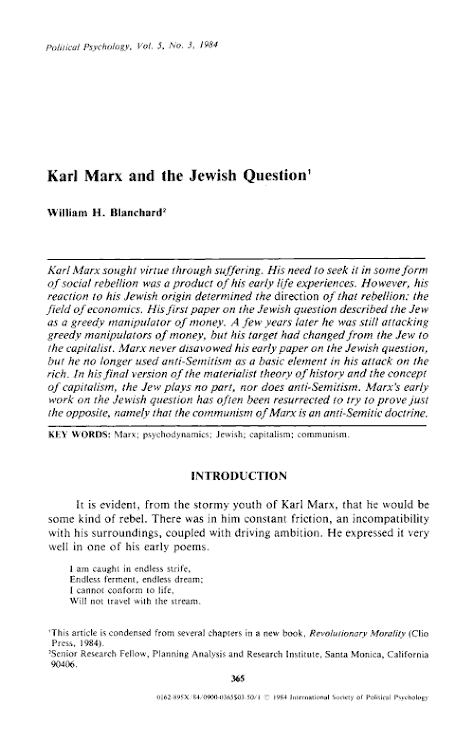











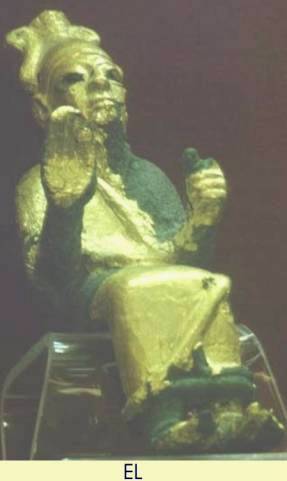

































+Anniversay+Dinner.jpg)















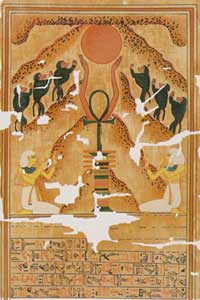








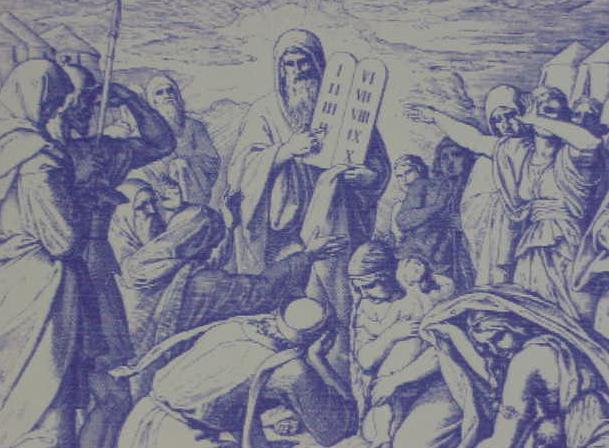
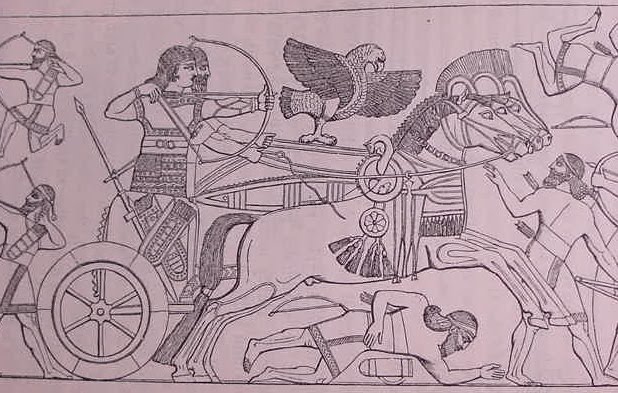
























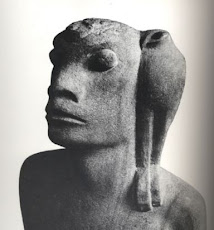












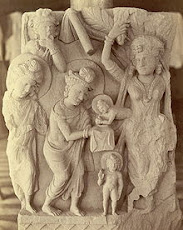
















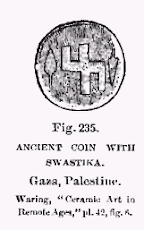






































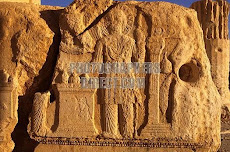

























No comments:
Post a Comment